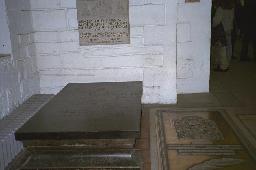Wren, Christopher |
| ARCHITECT (ENGLAND) |
|
BORN 20 Oct 1632, East Knoyle, Wiltshire - DIED 25 Feb 1723, London: Hampton Court GRAVE LOCATION London: St. Paul's Cathedral (crypt) |
|
Son of the Dean of Windsor, who was chaplain to the king. The Bishop of Norwich was his uncle. He spent his youth at Windsor Castle. He was brilliant at school and made a number of inventions before he was eighteen. He entered Wadham College, Oxford, on 25 Jun 1649. In Oxford he conducted important experiments, showing the use of opium as an anesthetic. He was elected a Fellow of All Souls in 1653 and lived in Oxford until 1657. In 1657 he became professor of astronomy at Gresham College, London. Together with other eminent scientists he formed "The Royal Society of London for the Promotion of Natural Knowledge" in 1662. In 1661 he had become Savilian Professor of Astronomy at Oxford and he kept this post until 1673. He distinguished himself in mathematics (solving Kepler's Problem) and Isaac Newton used Wren's work to develop his gravity theory. In 1663 he went to Rome where he closely inspected the Theatre of Marcellus. He would soon use his knowledge of the buildings of Rome for his own works. After the Great Fire of London in 1666 Charles II decided to give Wren the supervision of the rebuilding of the city. He was also commissioned to build St. Paul's Cathedral, which he managed to finish during his lifetime (1710). He was appointed Surveyor General of the King's Works in 1669 and in 1673 he was knighted. Other buildings built by Wren: Drury Lane Theatre (the old theatre had burnt down in 1672; the new one was opened on 26 Mar 1674); St. James (Piccadilly, London, 1674-1687); Chelsea Hospital; St. Clement Danes (Strand, London, 1680); Marlborough House (1709-1710). |



